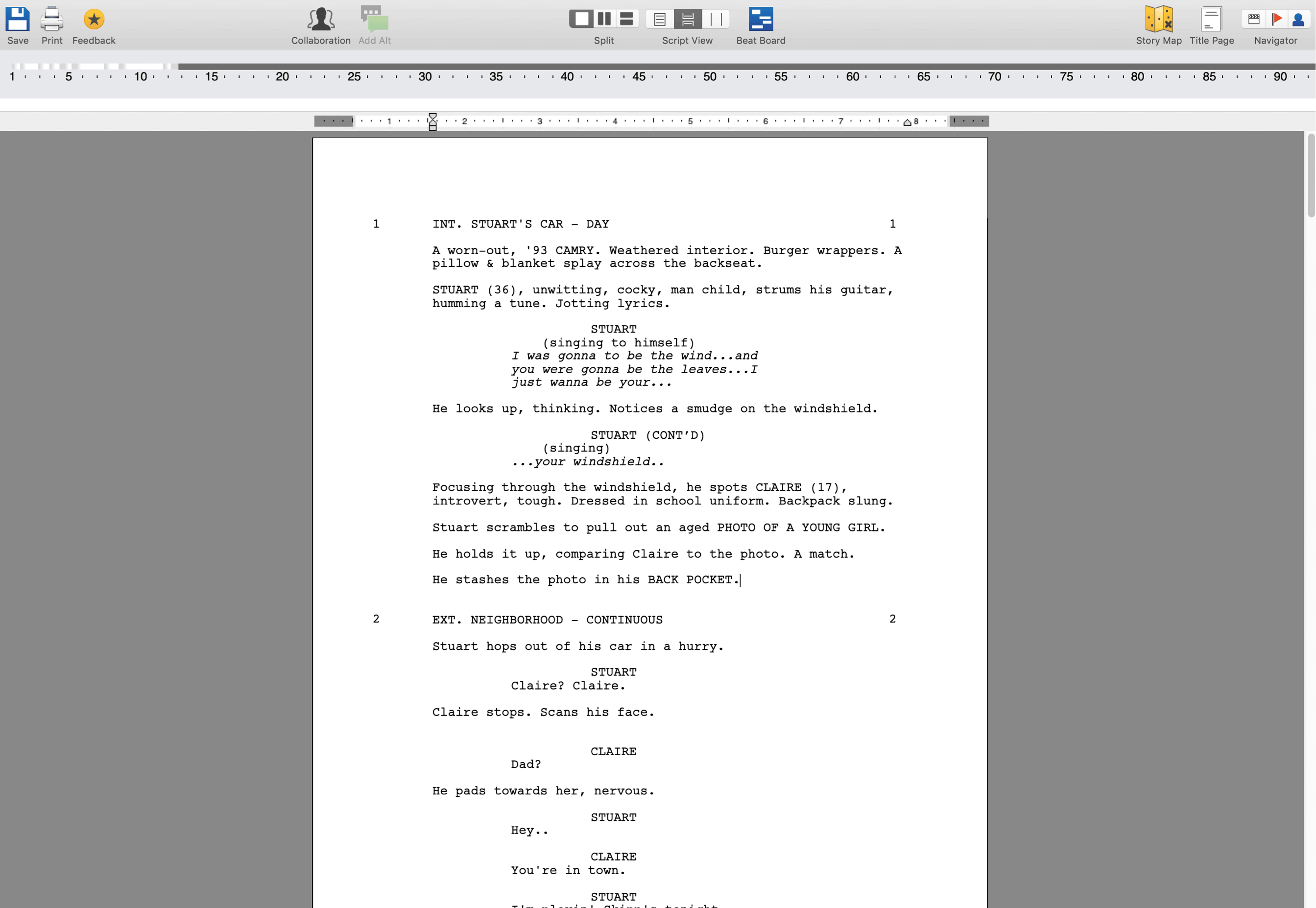

Once again, OSF is easy to parse using simplexml_load_string.įountain is what happens when compute nerds write films.
Open fdx in final draft 7 pro#
Note: FadeIn Pro is exceptionally helpful for converting between formats. Open Screenplay Format is a small open-source project on SourceForge which doesn't appear to be particularly well documented, but is elegantly structured. Possibly the newest entrant to the format market is the XML format OSF, used by Fade In Pro ( ). Trail to their campsite (which evidently is very far away).

Open fdx in final draft 7 archive#
docx.The structure of the archive is as follows:ĪLEX, JOSH, GIRL 1, and GIRL 2, are walking on a
Open fdx in final draft 7 zip#
celtx file is just a zip archive, like a. stdoc files which are in a proprietary format.Ĭeltx was the first open-source platform for screenwriting that became a real competitor to Final Draft, also offering a full-production platform for independent filmmakers. Note: Story appears to have now migrated to using. The native Adobe Story format (ASTX) is again just simple XML which is easily traversable using simplexml_load_file or DomDocument. As part of a larger production management system, all files are meant to inter-operate with Digital Asset Management (DAM) and film production breakdown/scheduling documents. For the moment it’s calm.Ī WOMAN CRIES OUT, drawing our attention to a scant farm house in the distance.Īdobe's web & desktop screenwriting software, Story ( ), as part of the Creative Cloud platform, is one of the newest entrants to the market and easily the most sophisticated. Use composer to add the package to your project vendor folder. Lists that can be copied and pasted into a breakdown very easily, to save time and effort. This library does one thing very simply: parse different types of script files to compile initial lists of scenes, characters, and props. That means manually compiling a list of scenes, characters, locations, and props, that will be required - which takes DAYS, and is pointlessly inefficient and archaic, when any computer can parse the information in seconds. Directors re-write, producers annotate, while wardrobe, locations, effects, casting and others, need to produce a breakdown. Once a script has been drafted by a screenwriter and financially green-lit for production, it is distributed to over 20 different film departments for marking up. Instead of wasting time dealing with these formats, come work on a better one! Overview

ScreenJSON is an effort to get rid of the writing packages/modules like this so there's a universal interchange format that can be imported into any programming language or platform, and can also be mined for information. The long-term future can't be about spaghetti-coding this stuff to deal with a dozen different proprietary file formats that are useless for doing anything meaningful. This package was a quick hack to get at the data inside Final Draft (XML), Celtx (RDF), Adobe Story (XML), Fountain (Markdown) and FadeIn (XML) files. Author: Alex Coppen ( Look at ScreenJSON instead.


 0 kommentar(er)
0 kommentar(er)
